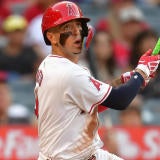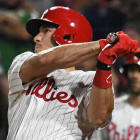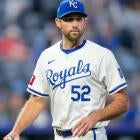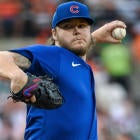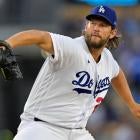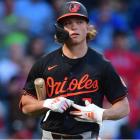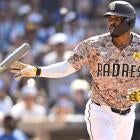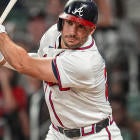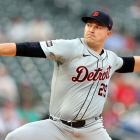I may have psyched myself out for this one.
Or maybe not. It's always an uneasy feeling when one of your teams turns out so different from all the others, and in this case, it was entirely deliberate. See, we were drafting for a 10-team Head-to-Head points league instead of the usual 12-teamer, and when you change the size of the league like that, the player pool plays differently.
We've talked repeatedly about how position scarcity is no longer a thing with home runs so widely distributed across the league, but the effect is amplified when fewer players are needed at each position. It makes it even harder to see where you can gain an advantage over your opponents when everyone matches up so well everywhere.
So I resolved that, for as long as it was an option, I would take any player with a high probability of ranking No. 1 at his position. Turns out it was an option for six rounds — longer than I expected, frankly. I got Alex Bregman for third base, Freddie Freeman for first base, Ketel Marte for second base, Yordan Alvarez for ... well, for DH, but he has top-10 potential as a hitter, Xander Bogaerts for shortstop and J.T. Realmuto for catcher. Nothing wrong with those picks.
What made it tricky is that I'm already fully on board with stacking the pitching staff at the start of a draft, seeing it as the clearest way to gain an advantage over your competition in 2020. It's the one true scarcity in today's game (well, other than stolen bases, which don't matter in this format), and when the drop-off comes, it's crippling.
My requirement in every draft, then, has been to grab four of my top 35 starting pitchers, which would normally mean having at least two, if not three, through six rounds. This time, I had zero.
But of course, 35 stretches further with two fewer teams, and recognizing this, I still managed to come away with not just four, but five. It's just that the first is only Mike Soroka. And the four others — Carlos Carrasco, Corey Kluber, Lance Lynn and Shohei Ohtani — all have glaring concerns. If three of those five don't work out, the small advantages I gained at those hitter spots won't be enough to make up for the huge disadvantage I have at starting pitcher.
So would I do it again? I mean, it was a tightrope walk to come away with those five, so the uneasy feeling I have today could have been much worse. I think I expected others to back off starting pitching, too, recognizing that the urgency didn't need to be the same in such a shallow format, but they didn't really, which left me to pick through the leftovers. Meanwhile, some of the hitter values turned out to be ridiculous. I ended up getting Bo Bichette in Round 13 just because no one had a place to play him, including me. Had I anticipated that, I wouldn't have filled my DH spot so early (Round 4) and instead taken someone like Lucas Giolito or Aaron Nola to be my No. 1 starting pitcher.
But big swings are necessary in a league that's so shallow. If nothing else, you know there's an ample waiver wire to make up for them.
Here's who took part in this draft:
1) George Maselli, CBS Sports
2) Nathan Judah, Express & Star (@NathanJudah)
3) Phil Ponebshek, Patton & Company
4) Frank Stampfl, CBS Sports (@Roto_Frank)
5) Adam Aizer, CBS Sports (@AdamAizer)
6) Nick Mimikos, Stack Attack podcast (@NMimi)
7) B_Don, Razzball (@RazzBDon)
8) Scott White, CBS Sports (@CBSScottWhite)
9) Joey Mellows, Baseball Brit (@BaseballBrit)
10) George Kurtz, Sportsgrid (@GeorgeKurtz)



